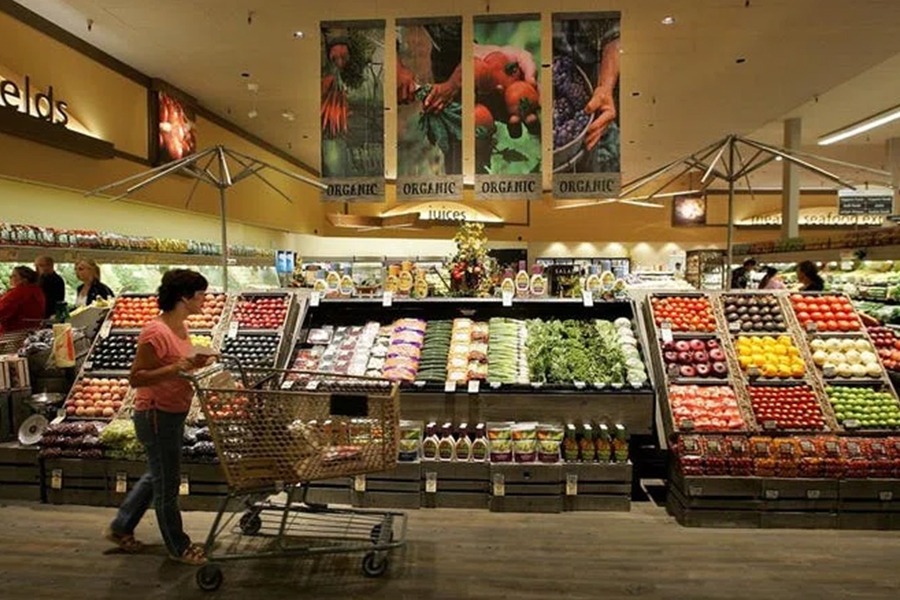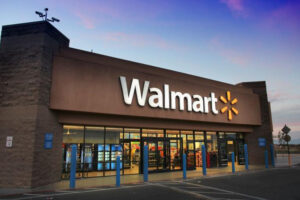The Future Of The Grocery Industry — Will Walmart, Kroger & Amazon Remain Leaders?
Most grocery shopping today is done the same way your mom did it when she pushed you in the cart. And yet, there’s probably no sector of retail on the verge of more change and upheaval than grocery. Grocers view their stores as the anchor of their business. But as consumers move more towards parking lot pickup and home delivery, the rent and expense of stores is a cost less supported by consumer shopping every day.
Selection, convenience and value are how consumers choose their grocery store and whoever can offer the best overall experience in those three factors will win. If an online grocer can match or beat physical stores on those points, online will keep growing and that’s where the industry is headed. It is only a matter of time until online shopping offers a highly competitive experience in every respect.
Imagine this: You open an app and enter “paper towels.” It gives you three prices, one for delivery in 15 minutes, one for delivery tomorrow and one for five days from now.
Or, as the founder of a company called Mavi, Cynthia Hollen, told me when I saw her at the Shoptalk conference earlier this month, you’re leaving work and getting in your car, you think you’ll make lasagna when you get home and you realize you have no lasagna noodles in the pantry. Hollen’s company lives on your car dashboard screen and allows you to order at the store so you can swing by on your way home where the pickup people hand you your pasta. Or, as Payman Nejati of Ownit suggested when we met at the same Shoptalk conference: you have your own special recipe for a dish on your mobile device. You click to tell the app to order everything in the recipe and include it in your order for tomorrow; if you already have one ingredient at home you unclick that item and it sends the rest.
Entrepreneur Katie Hotze founded a company called Grocery Shopii that does exactly that. Its software, fully integrate-able with retail grocers’ websites, allows consumers to search and find the recipes they want or store their own custom recipes, and get all or part of the ingredients right into their cart for delivery or pickup with a click.
These are but a few of the options for consumers that are changing the grocery industry. There are many more to come.
An enormous amount has been invested in “the last mile,” getting the groceries to consumers’ homes quickly and efficiently. Hotze says she is focused instead on the “first mile,” the experience the consumer has with the grocer that makes them return again and again.
Of course, fast delivery is part of what satisfies consumers but Hotze’s point is that the front end, what consumers experience when they select their products is just as important, maybe more. Right now, consumers have multiple apps with one for fast deliveries, one to order pickup and many others. Whoever can bundle that into one and make it easy for consumers to get everything in one place will have a big advantage.
That is where the future of the industry parts ways with the past. Retail store locations used to be the key to unlocking loyalty. With consumers going to stores less because they’re buying electronically, store locations that were the anchor of the industry won’t matter nearly as much.
An app operator may not have stores and might not even own inventory. As long as it can access products and get them to consumers with the selection, convenience and value that consumers want, it can win. It’s a very different way of thinking about the industry than anything that has come before.
That makes grocers with thousands of stores vulnerable to disruptors with far fewer resources. Mendel Gniwisch, CEO of Stor.ai that digitizes the entire grocery experience, says that “grocery ends up in a combination … where the online is everything in the dry goods department so you never go for detergent, bottled water, toilet paper. If it’s not experience-connected, it goes online.” Then, he says, “instore is more about what we like, not what we need,” like a new cheese or salami and more discovery shopping to find new products your household will enjoy.
That doesn’t mean shopping online for packaged products will be the only option. There will be other choices like automated picking in the back of the store from a warehouse of shelves where consumers don’t go. When you leave with the fresh products and new items you’ve selected, the system brings you the replenishables you selected as you exit.
There are so many ways that consumers might choose and get their groceries in the future that are still being imagined and built. Right now no one knows all the possible permutations.
But it’s coming and the big question is, can the leaders in grocery like Walmart WMT, Kroger KR, Albertson’s, Ahold and Publix adapt to what the industry will become? No one knows right now, it’s a question of whether their culture can adapt and develop the new skills they need for continued success.
The effect of the evolution in consumer habits, technology and culture is bigger in grocery than it has been in almost any other form of retail. By the time the industry has completely adapted, the upheaval that came to other types of retail like bookstores and toy stores will look simple by comparison.
These changes are coming whether anyone’s ready or not. No one knows if the companies that are the leaders in the industry today will emerge in the same position in five or ten years from now. Their positions are no longer protected by the scale of their business or the amount of capital they can access. Smaller, faster-moving competitors are a threat and the big players have to compete on unfamiliar terrain.
Source: Forbes




